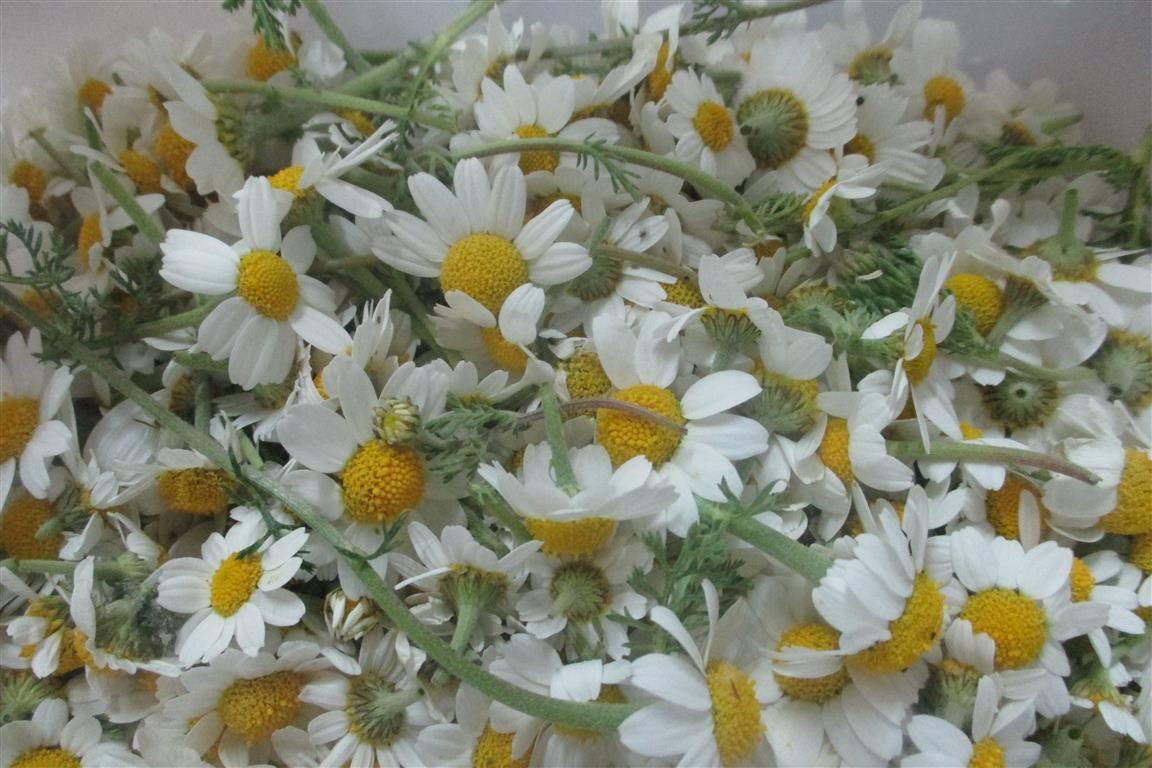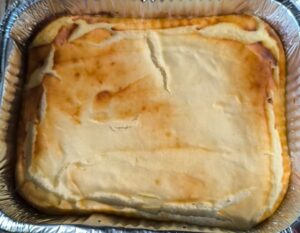When I open my front door, I see a sea of green, at the moment, interspersed with yellow flowers. If I look a little more carefully, I can see little white and yellow flowers hidden among all the yellow. Those little flowers that everyone around me sees every day but doesn’t pay attention to, because “it’s just a weed”. And yet… I would assume most people in my area have those very same flowers dried up and packaged in their cupboards to be used for tea.
Chamomile.
Most commonly associated with its relaxing and calming attributes, chamomile is most often made into tea and other drinks. However, you can use the flowers in many other recipes- either broken up into salads, thrown in other dishes, or seeped in liquid and that liquid used to make things like vinaigrettes, cookies, cakes, etc… You can even make rice pudding with chamomile, and chamomile ice cream!
I get my biggest kick out of foraging items that most people buy in the store, and I’ll admit, chamomile is one of those things.
Because I’m probably one of the few people in the world that isn’t absolutely in love with chamomile… To be honest, I’m not much of a tea drinker in general… But if I would drink tea, I’d more likely choose rosehip and hibiscus tea, as opposed to chamomile.
But since chamomile is right outside my front door, I knew I just had to pick some. Just to say that I did.
And now that I picked it, I’m going to do some more experimenting with it. Maybe a cold chamomile drink. Or chamomile popsicles. Or chamomile pudding!
After I already decided to write this post, I was told that chamomile greens actually are edible- I’ve never tried them before… Can’t wait to try it out!
So… how do you identify chamomile?
Well, there is more than one type of chamomile, but the two most common types are German/Hungarian chamomile (matricaria chamomilla/recutita) and Roman/English chamomile (chamaemelum nobile), and they both grow all over the world, in wide, open spaces. The ones near me mainly are the German chamomile, so that is what is pictured and I’ll be describing. I don’t know of any poisonous look alikes to chamomile…
So, chamomile.
Daisy like flowers, usually an inch wide or less. White petals on the outside, and a yellow cone-like raised center, comprised of many tiny flowers.
Hemorrhoids and wounds, skin ulcers, burns, skin rashes, burns, eczema.
Treat eye infections and inflammation.
As a vapor, be used to alleviate cold symptoms or asthma.
Relieve restlessness, teething problems, and colic in children.
As an anti-histamine for allergies.
Digestive aid, treating gastritis and ulcerative colitis, diverticular disease, irritable bowel problems and various gastrointestinal complaint, as well as reduce inflammation and facilitate bowel movement
As a relaxer and stress reliever- can have a similar effect as anti-anxiety medication. It works as an anti nausea, helps with heartburn, and stress related stomach issues.
Can help with insomnia via its mild sedative properties as well as muscle relaxing effect.
Reduce menstrual cramps.
There are mixed reports on whether or not it is safe to drink chamomile tea while pregnant, so keep that in mind.










0 Responses
This comment has been removed by a blog administrator.
This comment has been removed by a blog administrator.